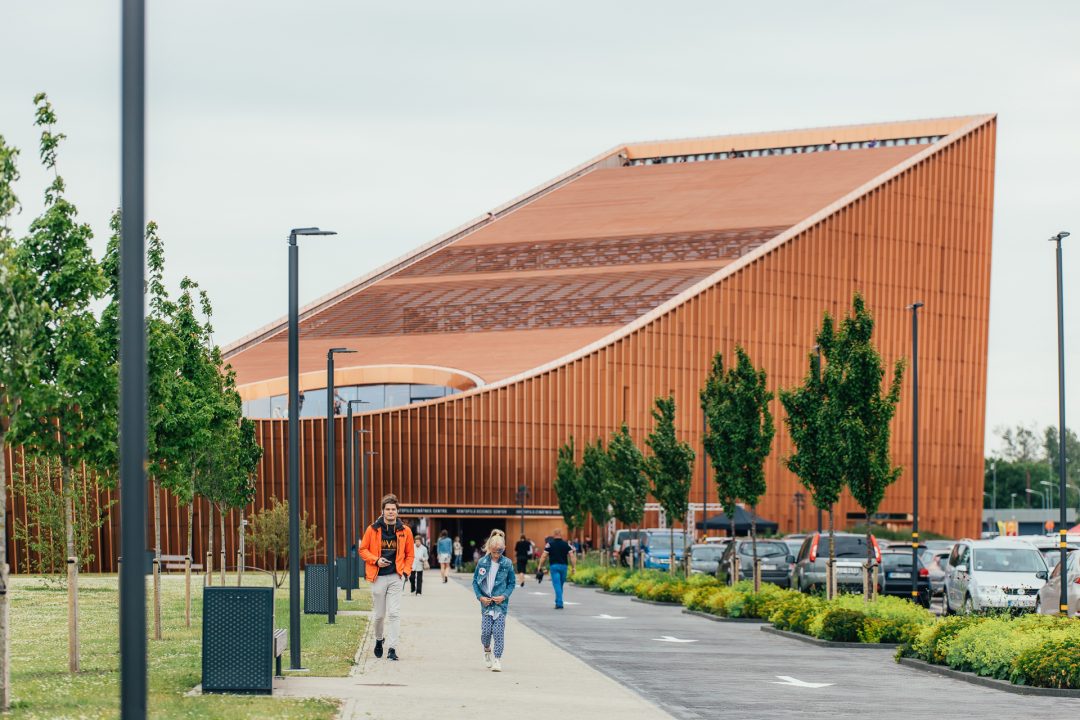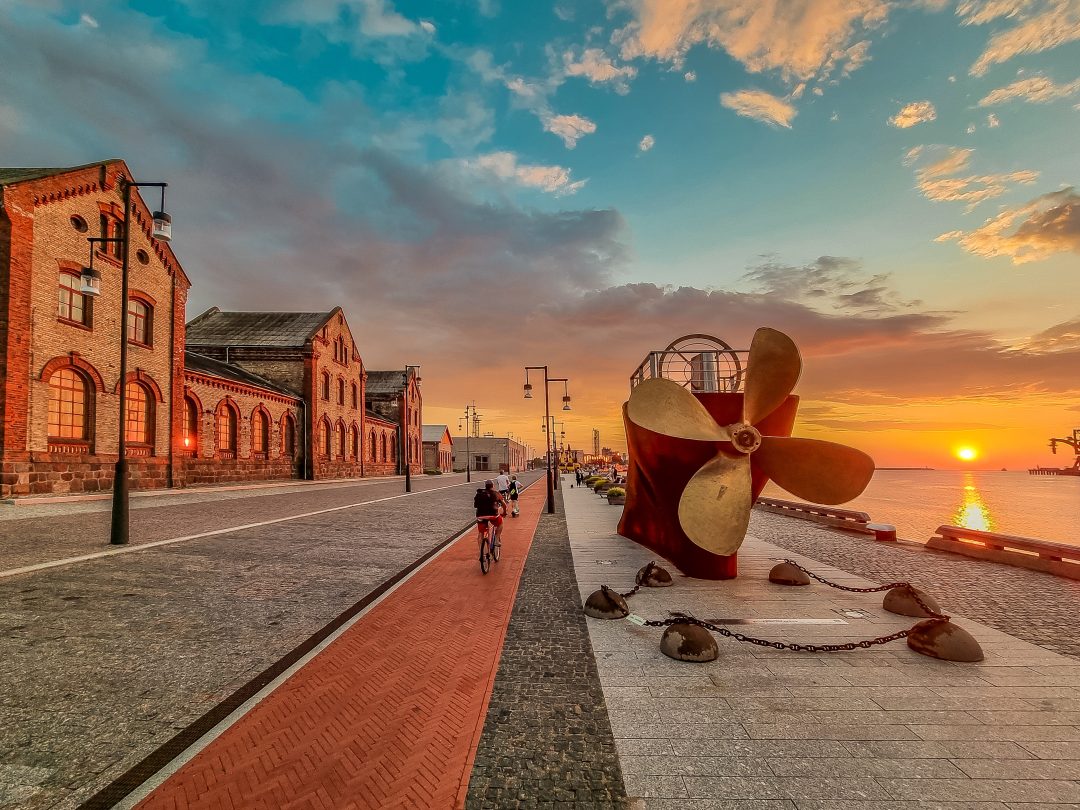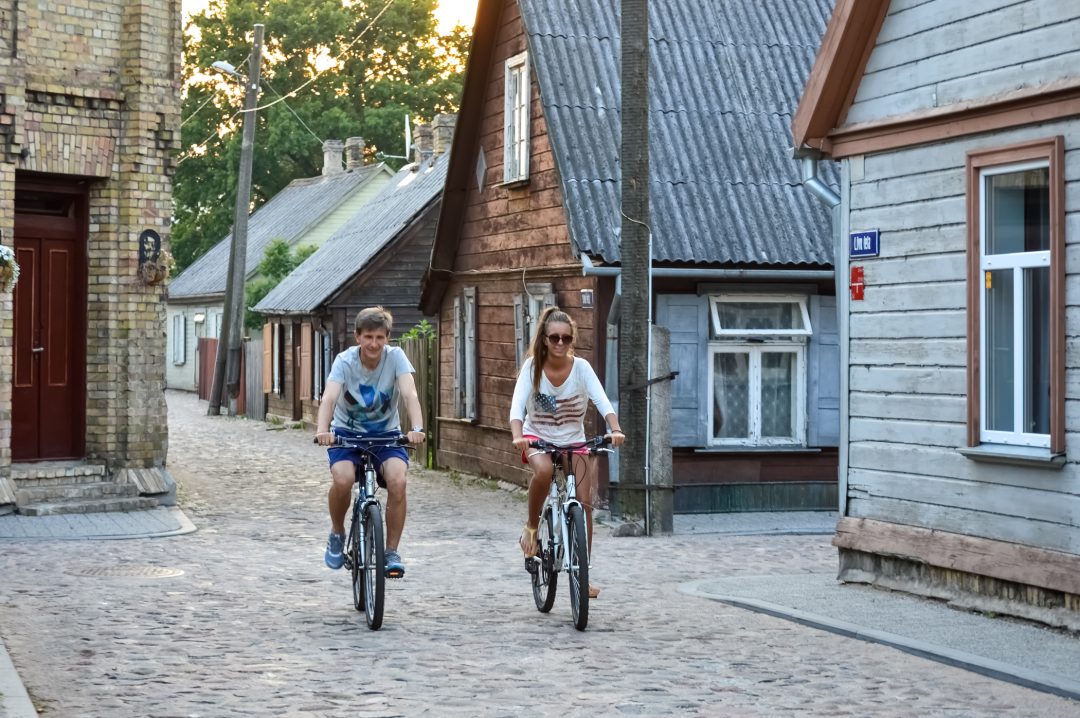According to the data of Ventspils Communal Administration, the total number of streets in Ventspils already exceeds 300. The number of streets changes as the city grows. In 1797, 35 streets were listed on the map, in 1900 – 50, and in 1912 – already 63 streets. There were even more streets after the surrounding villages of Ostgals, Strīķciems, Gāliņciems and others were added to the city on 3 January 1921. Unfortunately, it is not known when the streets got their names, but it is apparent that the oldest map of Ventspils records the existing, pre-established situation. Street names indicate the directions to take along this street, for example Kuldīgas, Užavas, Sarkanmuižas. . Several streets are dedicated to saints – Ģertrūdes (Gertrude), Katrīnas (Catherine), Annas (Anne), Sofijas (Sofia), Marijas (Maria). Others – to craftsmen: Maiznieku (bakers), Skroderu (tailors), Kuģinieku (sailors), etc. Others describe the main object in the street – Pils (castle), Nabagu (paupers), Skolas (school), Zvana (bell). Others – the streets themselves – Lielā (big), Platā (wide), Īsā (short)… Thus, Ventspils has the same tradition as European cities of giving understandable logical names. During the Tsarist times, when the city was growing and new streets were being formed, Street names started featuring duties to the Romanov dynasty – the names of the saints of the Orthodox Church, which are also the names of the rulers of Russia – Nicholas, Peter, Paul, Alexander. New streets also formed in the 1930s and were named in the spirit of the times – Brīvības (freedom), Lāčplēša (“The Bear-Slayer”), Strēlnieku (riflemen), Lidotāju (aviators), Radio (radio) Streets. The 20th century also saw the politicisation of street names. The first street to be renamed was Frīdriha (Friedrich) Street, which became Puškina (Pushkin) Street in the summer of 1914. It still bears this name. The most frequent renamings were of names that did not sound very good (Nabagu (paupers), Reņģu (herring)) and certainly of central streets. Te nu Ventspils nav izņēmums- Kuldīgas iela ir bijusi, gan Vadoņa, gan Hitlera, gan Padomju, gan Ļeņina iela. . Ventspils is no exception here – Kuldīgas Street has been named Vadoņa (leader), Hitlera (Hitler), Padomju (Soviet), Ļeņina (Lenin) Street. Ventspils is one of the first, if not the first, city in Latvia to return its historic names to its city streets, back in 1989, before the restoration of Latvia’s independence. But new streets are still being created and the innovation of names continues. Ventspils is the second city after Viļāni to have Lata (lats) Street.
The total length of Ventspils city streets is 189 km, which, interestingly, coincides with the official distance from Ventspils to Riga. The longest street in the city is Talsu Street – 5.7 km. The shortest – Zosu (geese) Street – 27 m. The narrowest street in Ventspils is Kurpnieku (shoemaker) Street, which is 1.81 m wide.
But the widest street is Lielais prospekts (The Big Prospectus) – 20.50 m at the entrance to the Venta Bridge.




